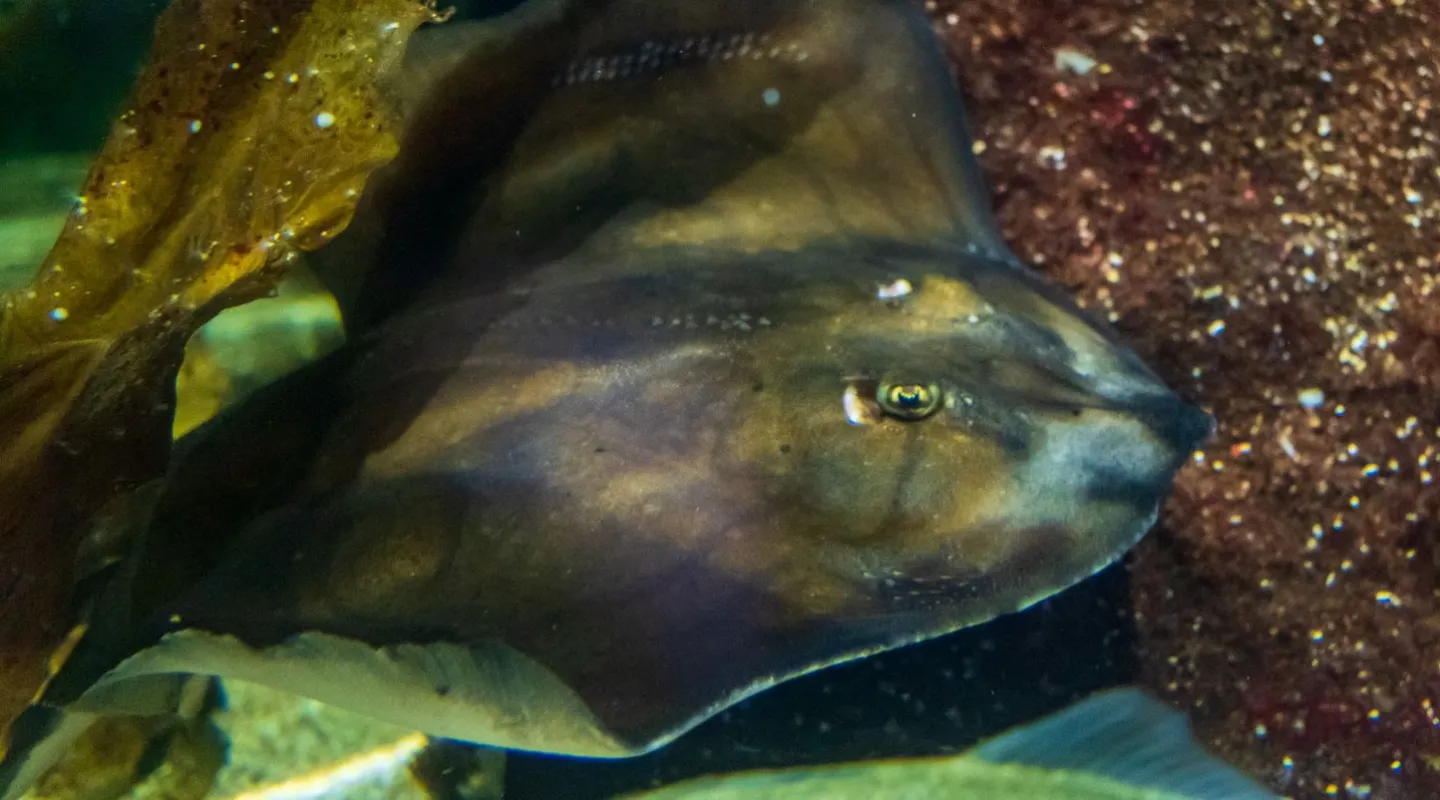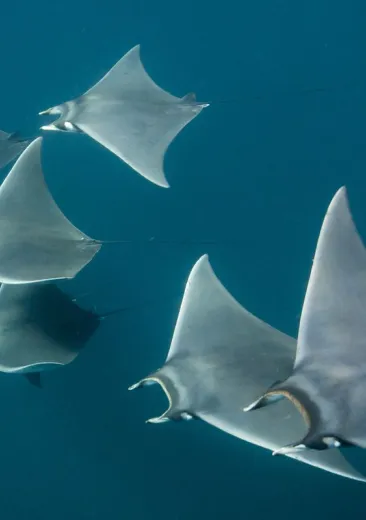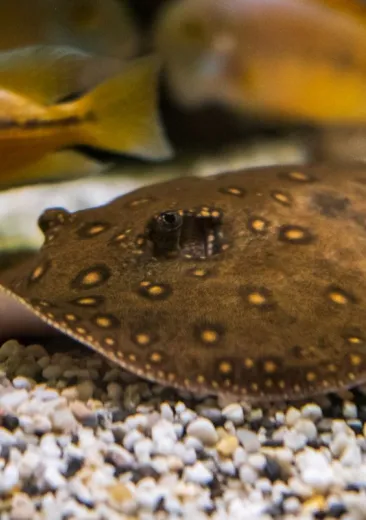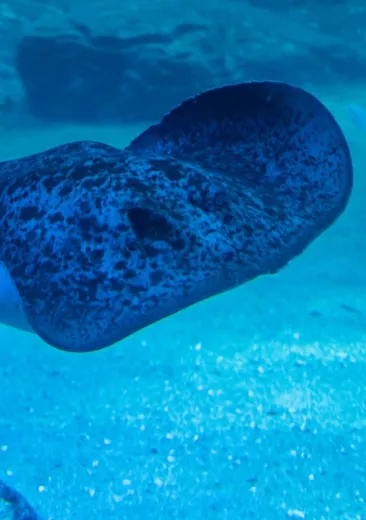Where is the animal to be found?
The ray is a benthic flatfish, i.e. it lives on sandy or gravelly seabeds, near the coast. It conceals itself during the day and is more visible at night.
It is found in the eastern Atlantic (from Ireland to Senegal) and the western Mediterranean.
How can it be recognised?
- The undulate ray is diamond-shaped owing to its triangular pectoral fins; it reaches a size of between 60 and 80 cm. The pelvic fins are small and tucked behind the pectoral fins. The male has pterygopods, which are reproductive organs located along the pelvic fins.
- The colour of its coat varies from brown to greenish or even grey. The undulate ray can be identified by the curved, undulating lines that cover its back with white spots around the edges.
- The coat is rough because it is covered with skin denticles like the skin of sharks, unlike the skin on its white abdomen, which is smooth.
- The head has spiracles, which are openings behind the eyes that are used for breathing. With this breathing method, the ray can remain immobile and hidden in the substrate, on the lookout for its prey and protected from predators.
- The other point that they have in common with sharks is that their teeth are constantly being renewed; the ray has several rows of teeth that replace any that fall out. The ray's teeth are flat and like plates, and are adapted to its mode of feeding, particularly for crushing the shells of crustaceans.
What is distinctive about it?
The undulate ray, like the thornback, blonde, small-eyed or cuckoo ray reproduces by copulation and the female produces a rectangular-shaped egg. The egg of the undulate ray is a horny capsule 8 cm long and 5 cm wide in which the embryo will develop, feeding on vitelline reserves.
The little ray will emerge from this capsule, which is also called a "mermaid's purse", after 3 to 4 months. The undulate ray's capsule can be recognised by the horns at the four corners of the capsule, which are shorter at the front than at the back.
The breeding season is from March to September, during which the female can lay more than 80 eggs. The eggs are laid about 3 weeks after fertilisation.
Threat and protective measure
Since 2023, the undulate ray has been the focus of an EEP, in which Nausicaá is involved. Aquariums that are partners in the programme share information about the animals in their facilities and, if there are any births, the young rays go to other facilities.
EU fishing vessels may not fish for, keep on board, tranship or land the following species: thornback ray (Raja clavata) in Union waters of ICES division* 3a; undulate ray (Raja undulata) in United Kingdom waters and Union waters of ICES sub-area* 6; and in Union waters of ICES sub-area* 10; the whale shark (Rhincodon typus) in all waters; the common guitarfish (Rhinobatos rhinobatos) in the Mediterranean;
*ICES area: https://peche.ifremer.fr/Le-monde-de-la-peche/La-gestion/ou/Zones-CIEM
Source: COUNCIL REGULATION (UE) 2023/194 of 30 January 2023











